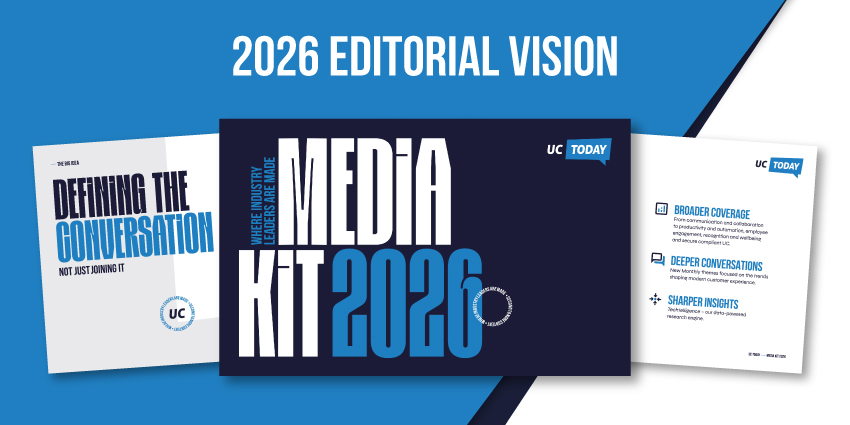Conversational intelligence software unlocks incredible opportunities for companies. Whether it gives you the insights you need to design a more effective hybrid workplace or powers your customer experience strategy, this data pays dividends.
The more data you can access from each communication experience, the more you can optimize operations and unlock higher revenue. You might even discover opportunities to bridge crucial gaps in your strategy. Around 83% of marketers believe information from communication data would help them design stronger campaigns.
The challenge for most companies is figuring out which conversational intelligence and analytics software they should be investing in. Here’s your step by step guide to making the right choice.
Step 1: Identify your Goals and Use Cases
Determining what you want to accomplish is the first step in effectively leveraging any new technology. Conversational intelligence software is more than just a powerful resource for improving customer service. While it can offer valuable insights into your customer’s journey, needs, and expectations, the right tools can also support a range of different use cases.
For instance, conversation intelligence software can help you design bots for specific purposes, like managing sales, supporting team members with technical issues, and so on. It can also provide insights into the steps you need to take to improve employee engagement and productivity.
When setting your goals, answer questions like:
- What do we want to accomplish? Are you trying to improve employee engagement and satisfaction rates, enhance customer experience, or access more data? What are your end goals, and how will you measure your success?
- Who will use it? Who will be using this software on a day-to-day basis. Are you trying to support your sales team, marketing team, or customer support? Will the product team use the software to help them design more effective solutions?
- How will we implement this software? Do you need something that will be built into your UCaaS or CCaaS platforms? Do you want a solution you can integrate with various different tools, such as your CRM and workforce management system?
Step 2: Identify The Most Important Features
Once you’ve identified your goals and use cases, the next step is to identify which features are crucial to your needs. Most conversational intelligence software will feature AI solutions, like natural language processing, machine learning, and sentiment analysis capabilities.
You may also need access to features for compliant call recording, so you can easily transcribe conversations, store them for compliance purposes, and learn from historical data. Other key features to consider when assessing your options include:
- Customer service features: These include intelligent call routing for the contact center, automatic quality assurance scoring, and the ability to generate customer journey maps. With your intelligent tools, you might even want to create your own self-service chatbots.
- Dedicated sales features: Some conversational intelligence solutions come with tools specifically designed for sales teams, like automatic lead scoring systems or assistants that can generate sales scripts and guide employees through pitches.
- Unique AI capabilities: Alongside NLP and machine learning, some conversational intelligence software includes access to generative AI bots that can summarize conversations or instantly create content. Some tools can even use AI to authenticate users, searching for specific nuances in their biometric “voice print.”
In addition to those features, prioritize excellent analytical capabilities, such as conversation categorization, keyword and phrase analysis, and custom reporting.
Step 3: Choose User-Friendly Conversational Intelligence Software
It might sound obvious, but if your conversational intelligence software isn’t easy to use, you won’t get the most value out of it. Based on your goals, and your knowledge of which employees will be using the software, consider how you can optimize the user experience.
Look for software that can instantly generate reports and insights without the need for technical knowledge. Prioritize tools that can work alongside your employees in the applications and systems they already rely on, such as their unified communication and contact center platforms.
Consider how the solutions you implement can reduce challenges for your team members, such as automatically recording calls for compliance, translating conversations in real-time with speech-to-text, or summarizing discussions.
Additionally, make sure the vendor you are considering working with takes a comprehensive approach to offering training, support, and guidance to all of your employees.
Step 4: Bridge the Data Gaps
Conversation intelligence software works best when it can offer a holistic view of your data. This is particularly true now that omnichannel customer service and employee communications are common. When searching for the right software, ensure it can align insights from all the communication channels you use.
Multimodal AI solutions that can analyze images and text as well as audio can help you to prepare to serve your customers more effectively, and access deeper insights into your team. Your conversation intelligence software should also integrate seamlessly with all the business software you use.
A system that integrates with your CRM solution can automatically update your customer records and surface valuable information to agents during conversations. A solution that integrates with your workforce management platform can assist you in organizing your assets and resources more effectively, leading to a boost in workplace efficiency.
Step 5: Remember Security and Compliance
Collecting data from conversations in the workplace and with customers might be crucial, but ensuring you’re following the right best practices to avoid compliance issues is important. Your conversational intelligence software should allow you to control which data you collect, how it’s stored, and who should have access to it.
You may need to look for solutions that automatically redact sensitive information from recordings. Alternatively, you might need to consider how you’ll manage the data you collect if you’re using it to train bots for future customer service requirements.
End-to-end encryption is usually a standard for most conversation analytics software. However, it’s crucial to ensure the solution you choose aligns with your security requirements.
Step 6: Track the Trends in Conversational Intelligence Software
Finally, even after you implement the ideal conversational intelligence software for your business, it’s important to stay up to date with the latest evolutions in the market. This environment is constantly transforming, with the rise of new LLMs, generative AI, and automation options.
Choose a solution you can scale and upgrade with new features as your business evolves. A leading vendor will be able to give you a system that can accommodate new communication channels, new AI models, and even advanced features, like conversational biometrics.
They should also give you complete control over how you customize and scale your software over time, allowing you to create new bots for different purposes, or update AI tools with proprietary data.
Choose the Best Conversational Intelligence Software
Conversational intelligence and analytics software can be an incredible resource for businesses. With it, you can dive deeper into the critical data that will help your business to thrive and grow in the years ahead. Whether you’re trying to turbocharge your sales teams, improve customer experience, or enhance collaboration, the right software can help.
Use the steps above to compare your options carefully, and be ready to evolve when new technologies and opportunities emerge.







